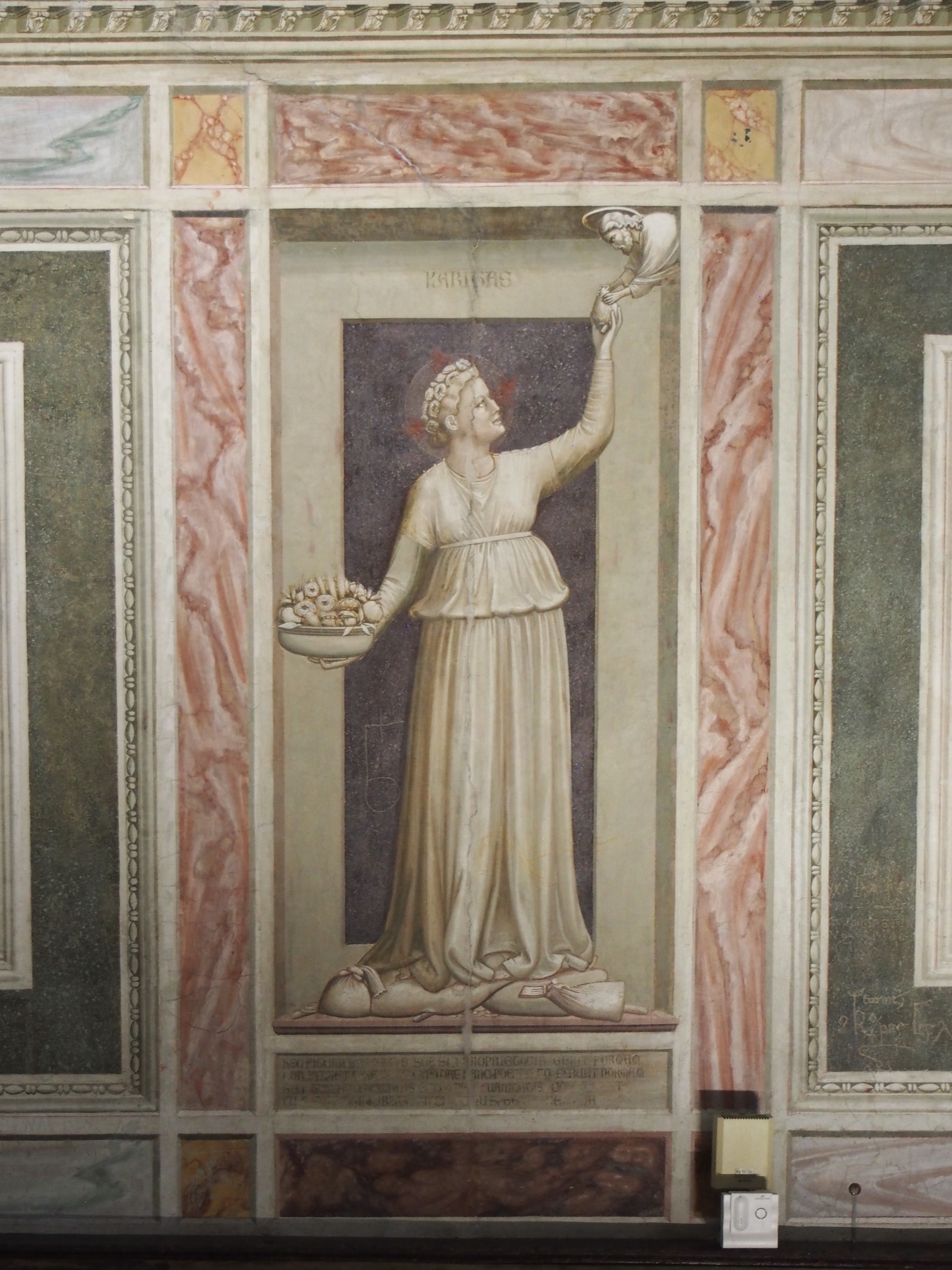After antiquity, with European academia suppressed and anatomical dissection deemed illegal, the Islamic world played a vital role in translating and advancing ancient Greek medical works. The proto-Renaissance artist Giotto influentially portrayed a scene in Padua’s Scrovegni Chapel in which Caritas offers her heart, complete with the aorta, to Jesus. Giotto’s representation of the heart is similar to Galen’s pinecone model, depicting it with the tip pointing upward. Moreover, around Giotto’s era, St. Valentine’s Day became associated with romance and surged in popularity. Chaucer, in his 1375 poem The Parliament of Fowls, wrote “For this was on Saint Valentine’s day / When every fowl comes there his mate to take,”[3] contributing to the cultural link between the day and the celebration of romantic love. More and more images containing the heart motif emerged.
Not long after Giotto, the Renaissance reignited interest in understanding the human heart in the western world. Leonardo da Vinci advanced anatomical knowledge through his detailed drawings of the coronary vasculature.
The artistic representation of the heart has not undergone significant changes since Giotto, except for one crucial detail, which can be gleaned when comparing Giotto’s 14th-century painting to a 16th-century print (Allegory, shown above). In the print, the heart’s pinecone shape is flipped upside down, showing the familiar scalloped heart (wider at the top) we know so well. That direction also aligns with the biological heart as we know it today. According to scholar Pierre Vinken, since the early 14th century, the scalloped heart symbol associated with St. Valentine has exerted a lasting influence on the visual representation of the heart to the present day.[4] The ❤️, a symbol seamlessly woven into the fabric of our lives, unfolds narratives steeped in a long and rich history.
Vivian Jin is a Ph.D. candidate in the Department of the Classics at Harvard University and a former graduate student intern in the Division of Asian and Mediterranean Art at the Harvard Art Museums.
[1] The Egyptian persea has the botanical designation of Mimusops Schimperi. For a cultural history of persea in Hellenistic and Roman Egypt, see Stefano G. Caneva, “The Persea Tree from Alexander to Late Antiquity: A Contribution to the Cultural and Social History of Greco-Roman Egypt,” Ancient Society 46 (2016): 39–66.
[2] J. T. Willerson and R. Teaff, “Egyptian Contributions to Cardiovascular Medicine,” Texas Heart Institute Journal 23 (3) (1996): 191–200.
[3] A. S. Kline, trans., Geoffrey Chaucer, The Parliament of Fowls, ll. 309–10.
[4] Pierre Vinken, “How the Heart Was Held in Medieval Art,” Lancet 358 (9299) (2001): 2155–57.
Further Reading
Wallisa Roberts, Sonja Salandy, Gaurav Mandal, M. K. Holda, K. A. Tomaszewksi, Jerzy Gielecki, R. Shane Tubbs, and Marios Loukas, “Across the Centuries: Piecing Together the Anatomy of the Heart,” Translational Research in Anatomy 17 (2019): 100051.
Islamic Medical Manuscripts at the National Library of Medicine, National Library of Medicine, Baltimore, Maryland.




